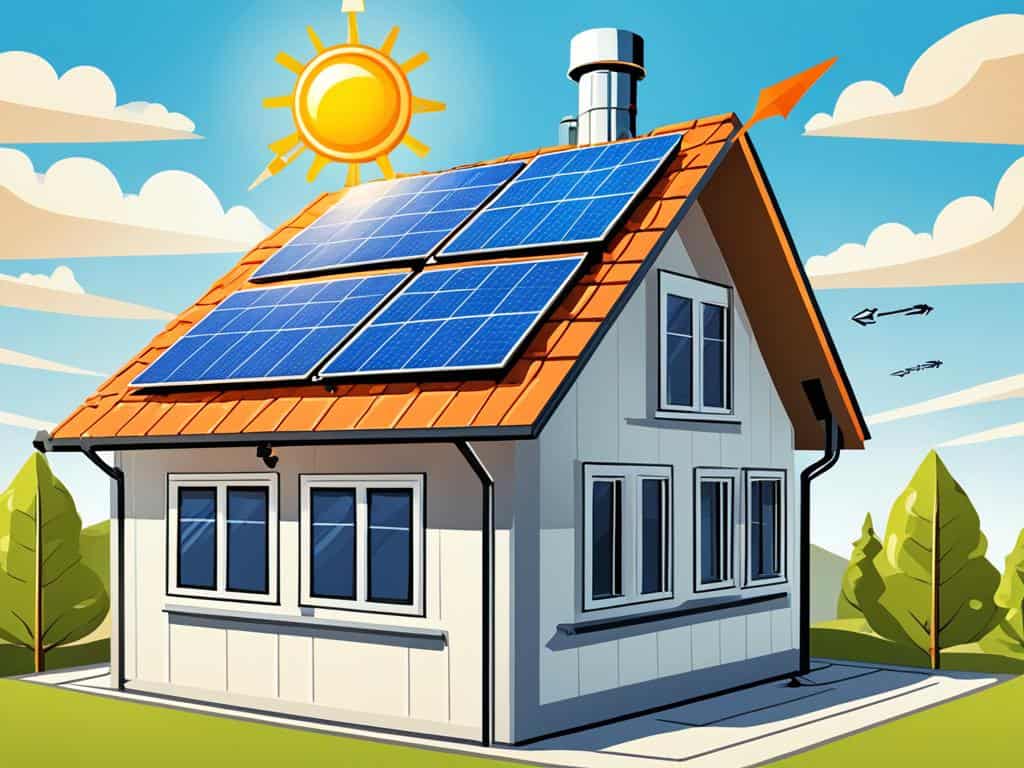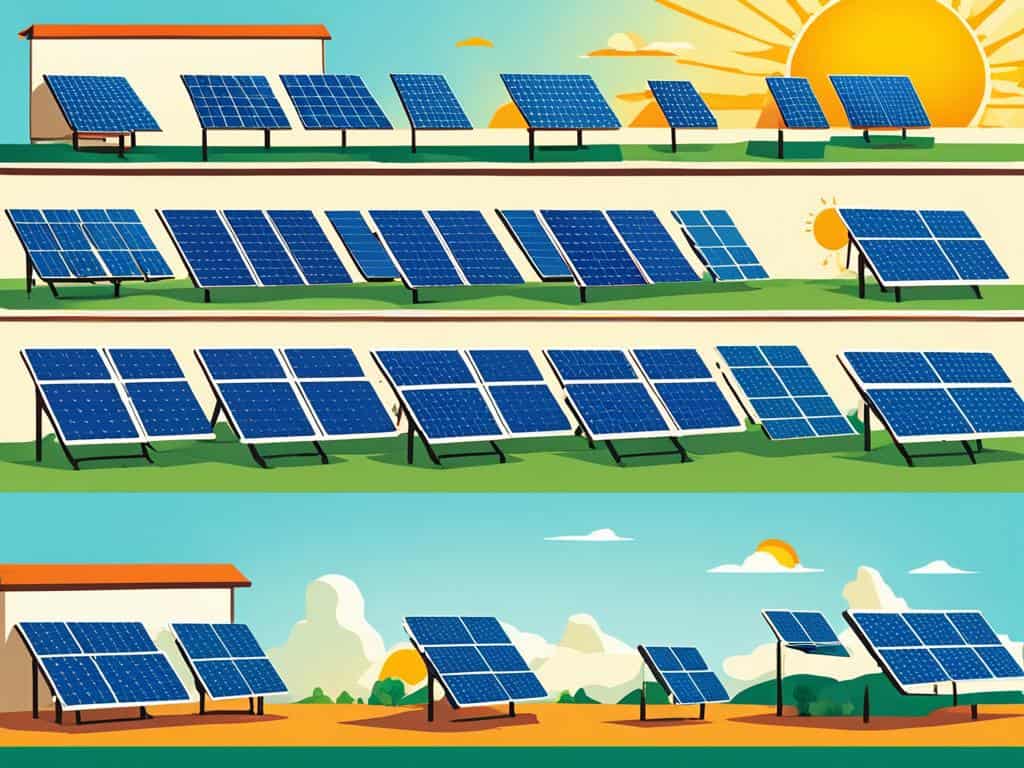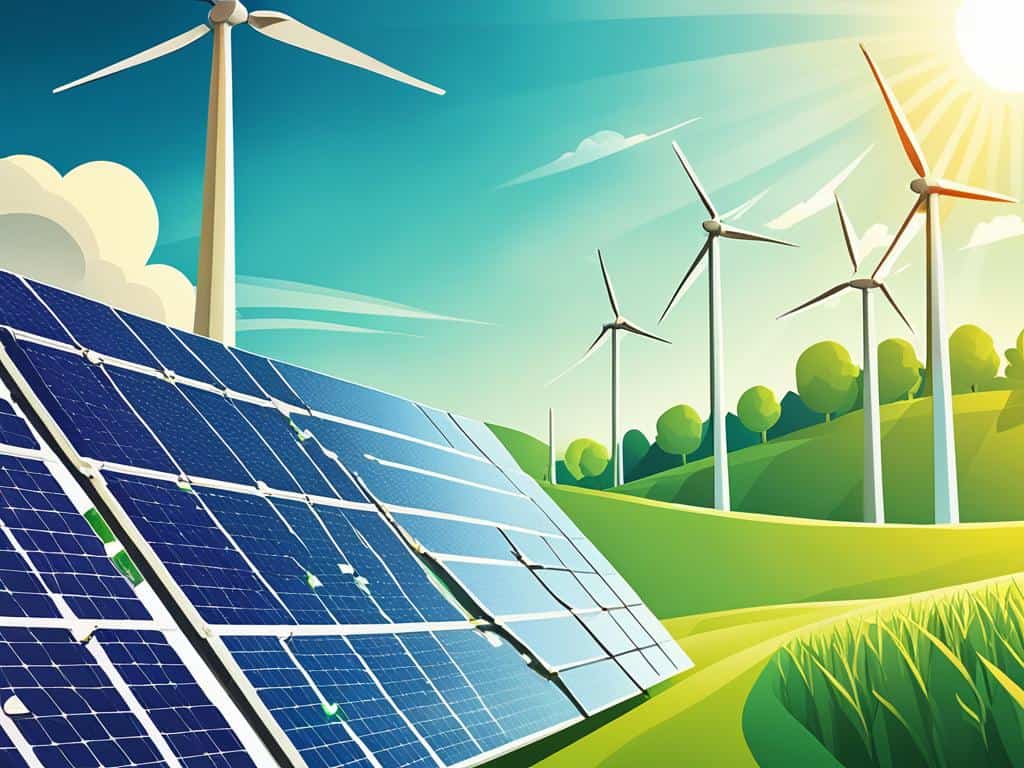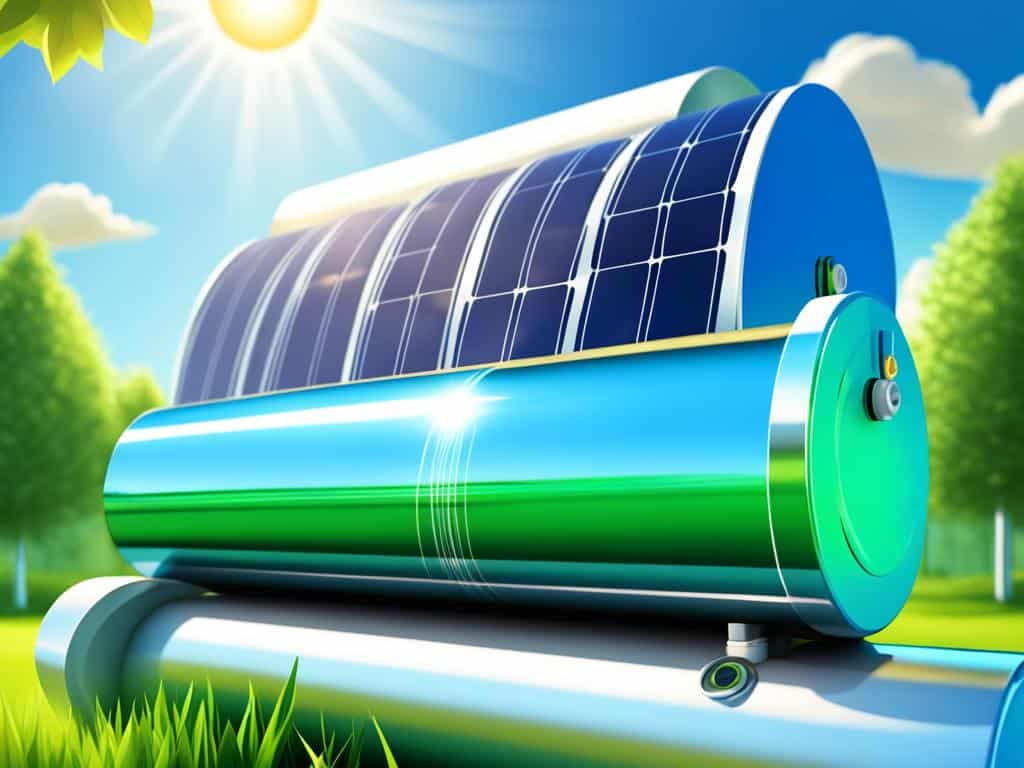Choosing the Right Solar Panel Size for Your Energy Needs in India
Discover how to choose the ideal solar panel size for your energy requirements in India, ensuring maximum efficiency and savings.

Many Indian homeowners are now looking towards sustainable living. They are thinking about using solar energy. Choosing the right solar panel size can seem tricky. How do you know what fits your needs best?
Unlike many U.S. homes, Indian homeowners have different challenges. These can include renting issues or not enough roof space. So, figuring out the ideal solar panel size in India involves more than just measuring your roof. You need to consider your energy needs and how to make the most of solar energy.
Fenice Energy helps you tackle these challenges. They offer clean energy solutions to make using solar power easy for your home.
Key Takeaways
- Choosing the ideal solar panel size is critical for energy and cost efficiency.
- Number of solar panels needed varies based on annual electricity consumption and panel efficiency.
- Monocrystalline panels offer higher efficiency and potentially reduce the number of panels needed.
- Assessing solar potential helps determine the best solar panel system for your specific situation.
- Fenice Energy provides expertise in solar solutions, ensuring the right fit for your energy goals.
Understanding the Importance of Solar Panel Size in India’s Solar Energy Market
India’s solar energy market is growing fast. Its renewable energy capacity jumped by 250% from 2014 to 2021. The government’s goal is to reach 450 GW of renewable capacity by 2030. This makes the right solar panel size crucial for maximizing India’s rooftop solar opportunities.
Assessing India’s Solar Potential and Rooftop Space Constraints
India gets about 5,000 trillion kWh of sunshine every year. Yet, rooftop spaces are quite varied. This ranges from large commercial areas to small home roofs. With power needs hitting 817 GW by 2030, finding the best solar panel size is key. It must fit the space but still catch enough sunlight.
Comparing Panel Sizes: Efficiency Versus Physical Dimensions
Choosing the best solar panel size often involves a balance. It’s about the panel’s size against how well it works. Standard sizes make installations uniform. Yet, local energy needs should decide if a panel’s size matches its performance. High wattage panels can be smaller, which helps save space and gather more energy.
Fenice Energy’s Approach to Optimal Solar Panel Sizing
Fenice Energy is a leading player in India’s solar market. They have over twenty years of experience. The company uses this expertise to pick the best solar panel sizes. India attracted investments of US$ 15.36 billion in energy from April 2000 to September 2023. Fenice Energy looks at roof layout, shadows, and local sunlight to choose right.
The table below helps understand the costs of different solar systems in India. It shows how much you might spend based on your energy needs:
| Solar System Capacity | Cost in INR |
|---|---|
| 1 kW Solar System | ₹65,000 – ₹75,000 |
| 2 kW Solar System | ₹1,40,000 – ₹1,50,000 |
| 3 kW Solar System | ₹1,80,000 – ₹1,90,000 |
| 5 kW Solar System | ₹2,50,000 – ₹2,70,000 |
| 7.5 kW Solar System | ₹3,70,000 – ₹3,90,000 |
| 10 kW Solar System | ₹4,90,000 – ₹5,10,000 |
| 15 kW Solar System | ₹7,00,000 – ₹7,50,000 |
| 20 kW Solar System | ₹9,00,000 – ₹10,00,000 |
India now ranks 5th globally in solar installations. Getting the panel sizes right is crucial for sustainable growth. Fenice Energy adapts its solutions to match India’s growing needs. This supports the 2030 goal for half of India’s power to come from non-fossil fuels.
Factors Determining the Ideal Solar Panel Size for Your Home
The ideal solar panel size for your home depends on many factors influencing solar panel size. One key aspect is the household energy requirement, which changes greatly from home to home. Fenice Energy ensures the solar solution is a perfect fit for your energy needs.
The type of solar panel material also greatly affects the panel’s performance and life. The choice between polycrystalline, monocrystalline, and thin-film is crucial. Each type offers different levels of efficiency, impacting the size and number of panels you’ll need.

In India, sunlight availability is high but not the same everywhere or throughout the year. So, the size and setup of solar panels need to be just right to capture the sun’s energy well. This might mean more efficient panels in cloudier places or fewer, larger panels in sunny spots.
A good solar energy system meets your current household energy requirements and anticipates future changes. Fenice Energy helps customers plan for the long term, ensuring their solar solution stays effective.
- Assessment of daily electricity consumption
- Analysis of roof space to accommodate solar panels
- Estimating the average sunlight hours for efficient power generation
- Evaluating budget for upfront costs and long-term benefits
| Factors | Details | Considerations for Indian Households |
|---|---|---|
| Household Energy Requirement | Varies based on usage, size of home, and appliances | Calculating average daily kWh consumption |
| Solar Panel Material | Options include polycrystalline, monocrystalline, thin-film | Choosing based on balance of cost and efficiency |
| Sunlight Availability | Dependent on geographic location and season | Considering regional weather patterns and peak sun hours |
| Rooftop Space | Limited by physical dimensions and roof design | Maximizing panel layout within available area |
| Budget | Cost considerations for installation and maintenance | Exploring financing options and government incentives |
In short, the ideal solar panel size is custom-made, blending detailed analysis with professional advice. With Fenice Energy, choosing solar energy is not just an option but a smart investment in a green future.
Solar Panel Size: Calculating Your Energy Consumption and Output Needs
Starting your solar energy journey starts with knowing your energy needs. You’ll also need to figure out the best size for your solar panels. You must think about your household electricity usage and solar panel wattage. It’s also key to consider how solar panels perform in real life. This ensures your energy hopes fit with what the technology offers. Fenice Energy is here to help. We guide clients in calculating solar panel size and making the most of their solar energy consumption.
Evaluating Household Electricity Usage and Solar Panel Wattage
Understanding your solar needs begins with checking your electricity use. In India, the electricity use can be quite different from the U.S. For example, a typical U.S. home used about 907 kWh each month in 2022. But, numbers in Indian homes might change based on lifestyle and appliances. Solar panels in India usually make between 250 and 400 watts. The challenge is to match the panel wattage with your energy use. This decides how many panels you need. Fenice Energy has the skill to find the right system size for you.
How to Calculate the Total Kilowatt-Hours Required for Your Residence
Right-sizing a solar system means knowing your home’s energy use. Homeowners should look at their utility bills to see their yearly kilowatt-hour use. Taking this info and comparing it with the sun’s peak hours in your area helps craft a suitable solar panel setup. For example, a household of four or five in India might need a 4 to 5 KW system. This matches their yearly use with the panel’s effectiveness and solar exposure in their area.
Real-world Solar Panel Performance and Production Predictions
Things like shade, how your roof faces, and the local weather can all affect solar production. These elements also influence solar panel performance. For homes in India, you can get fairly accurate energy production estimates. Factor in how your system faces the equator to increase efficiency. Also, remember to consider system losses, which are usually about 15%. Knowing these points helps connect your solar panels’ potential with their real daily energy contribution.
Using average efficiency ratings, homeowners in India can guess their system’s performance quite well. There are different kinds of solar panels like monocrystalline and polycrystalline. Their efficiency varies, so you need to think about both your budget and how big your roof is. For a detailed calculation, using a PV watts calculator is a good move. It helps consider your roof’s tilt and direction, making the system fit your home better.
| Solar Panel Type | Efficiency in India (%) | Annual kWh Production |
|---|---|---|
| Monocrystalline | 15-20 | Approx. 750-850 kWh (1 KW system) |
| Polycrystalline | 13-16 | Approx. 750-850 kWh (1 KW system) |
| Thin-Film (CIGS) | 13-15 | Varies based on project size |
In summary, finding the perfect solar panel size is a personalized process. It requires knowing your household electricity usage, daily energy use, and local weather well. By carefully considering these aspects, Fenice Energy guarantees that each solar solution not only meets clients’ current energy needs. It also helps lead to a green, self-reliant future.
Assessing Available Roof Space for Maximum Solar Panel Installation
Solar panel installation has huge potential, waiting to be used on rooftops. Assessing roof space is crucial in solar power’s success. By finding the right mix of solar panel layouts, the direction the roof faces, and energy production, rooftops can become strong energy sources. Fenice Energy leads in making these assessments.
Rooftop Layout and Potential Solar Array Configurations
The best solar setup starts with understanding your rooftop’s design. Size, shape, and any obstacles are important in installing solar panels. In the U.S., there’s enough rooftop space to produce over 1 terawatt of solar energy. Proper planning means even small roofs play a big part in the country’s solar potential.

Gauging the Impact of Roof Orientation on Solar Panel Efficiency
The direction your roof faces affects how much sunlight your solar panels get. South-facing roofs usually do best. The Sun Number score, ranging from 1 to 100, helps homeowners grasp their roof’s solar power potential. Fenice Energy uses this approach to boost solar panel effectiveness.
Finding the Perfect Balance Between Size, Number of Panels, and Energy Output
Finding the right mix of panel size, quantity, and energy production is complex. As the solar sector grows, personalizing solar solutions is crucial. Now, deploying solar power affordably is possible, thanks to lower costs. Fenice Energy helps homeowners get efficient, cost-effective solar setups.
In conclusion, solar technology is more accessible than ever for homeowners. The key is carefully looking at roof space. Analyzing roof design, position, and energy potential helps start a sustainable path. Fenice Energy guides households on this journey.
Considering Budget and Solar Investment Returns When Sizing Solar Panels
Starting your solar journey requires looking at your budget vs. the savings over time. You’ll need to deeply analyze solar panel costs to find the best options. In India, where there’s a lot of sunlight and rising electricity prices, solar is a smart choice.
The success of solar investments largely depends on initial costs against long-term savings. Knowing the details of solar returns is important. This helps you make a decision that’s good for both your wallet and your energy needs.
Cost Analysis: Evaluating Return on Investment of Different Panel Sizes
Choosing solar panels is a financial and environmental move. The size of the panel greatly affects your return on investment (ROI). It’s vital to look at the cost per watt and panel efficiency. This way, homeowners can get the most out of their investment.
The Economic Viability of Solar Panel Installation in India
Fenice Energy sees India’s great potential for solar. They provide advice to make the most of this opportunity. Solar investments make sense here. They lower your energy bills and help the environment, serving two great purposes.
Long-Term Savings: How Panel Size Influences Future Energy Costs
With rising electricity prices, solar becomes more appealing for its long-term savings. Choosing the right size solar system helps you save as energy costs go up. This takes looking at energy prices now and in the future, plus how well panels perform over time.
| Panel Size | Initial Cost (INR) | Estimated Long-Term Savings (INR) | Break-Even Point (Years) |
|---|---|---|---|
| Small (1-2 kW) | 70,000 – 140,000 | 150,000 – 300,000 | 6-8 |
| Medium (3-5 kW) | 210,000 – 350,000 | 450,000 – 750,000 | 5-7 |
| Large (>5 kW) | 350,000+ | 750,000+ | 5-6 |
Fenice Energy has over 20 years of clean energy experience. They provide expert advice and in-depth solar panel cost analysis. Fenice ensures homeowners make a smart investment. This meets their budget today and boosts their savings and solar returns in the future.
Conclusion
To make a future with solar energy, we need smart planning, not just hope. Knowing how to size solar panels correctly is crucial. It’s about looking at everything – how much energy a home needs, the sunlight in India, and how much money people can spend. Fenice Energy plays a big role in this, balancing clean energy with smart money decisions.
Thanks to a new 30% solar tax credit, more families in India can now get efficient solar solutions. These solutions not only meet their energy needs but also offer great savings. Solar energy can double an investment in ten years and solar panels last a long time. This means families can say goodbye to big electricity bills. Fenice Energy, with twenty years of experience, doesn’t just sell solar panels. They offer complete solutions to help Indian families move to a greener future.
The path to solar energy comes with its challenges. Yet, the benefits are huge – low upkeep, reduced electricity bills, and helping the planet. As Indian families turn to the sun for energy, the strength of solar technology shines. Fenice Energy’s knowledge lights the way. As we work for a cleaner Earth, India’s move to solar is a story of hope, care for the environment, and a society powered by the sun.


